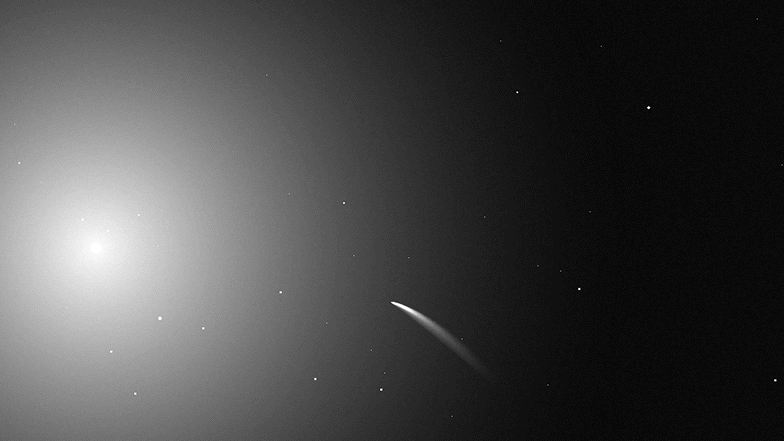The brightest comet in nearly two decades, Comet 2024 G3 (ATLAS), is on its way to becoming a dazzling celestial spectacle as it nears the sun. With a predicted peak brightness potentially rivaling Venus, skywatchers have high hopes for its visibility — but conditions might make spotting it a challenge.
A Rare Visitor from the Oort Cloud
Discovered on April 5, 2024, by the ATLAS survey using a telescope in Chile, G3 ATLAS originates from the Oort Cloud, a vast shell of icy objects encircling our solar system. Initial calculations suggested it was a first-time visitor to the inner solar system, raising concerns about its stability. However, refined data revealed this comet has an orbital period of roughly 160,000 years, indicating it has survived a previous close encounter with the sun.
A Potential Showstopper
G3 ATLAS is expected to reach its closest approach to the sun (perihelion) on January 13, 2025, at a distance of just 8.7 million miles (14 million kilometers). Its peak brightness could reach a magnitude of -3.2, potentially making it as brilliant as Venus in the sky. Some optimistic predictions even place its brightness closer to magnitude -6, nearly three times brighter than Venus.
Will It Be Visible?
Despite its predicted brightness, the comet’s close proximity to the sun may make it difficult for casual observers to spot. Observers in the Southern Hemisphere have had the best views so far, but the comet’s path is now shifting slightly northward, offering a narrow viewing window for the Northern Hemisphere between January 12 and 14.
Key viewing opportunities:
- Morning of January 12: The comet will rise about 35 minutes before sunrise, appearing 5 degrees above the sun in the east-southeast sky.
- Evening of January 14: Look west-southwest shortly after sunset, where the comet will be positioned 7 degrees above the sun.
Binoculars are recommended to locate the comet in twilight conditions.
Forward Scattering: The “Dusty Windshield Effect”
A phenomenon called forward scattering may enhance the comet’s brightness as sunlight interacts with its dust particles, creating a glow similar to driving into the sun with a dusty windshield. This effect could briefly make G3 ATLAS easier to spot, with the phase angle peaking at 115 degrees late on January 13.
A Celestial Gamble
Astronomers remain cautious, as comets are notoriously unpredictable. Sudden outbursts or disintegration near the sun could dramatically alter its visibility. Recent brightness spikes have raised questions about its stability, but so far, G3 ATLAS has continued to brighten without breaking apart.
How to Watch Safely
Never look directly at the sun, even with binoculars or telescopes. The safest way to view the comet is during the brief windows when it’s visible just before sunrise or after sunset, well above the sun’s glare.
Keep your binoculars ready — this once-in-a-160,000-year comet might deliver a rare celestial show!








